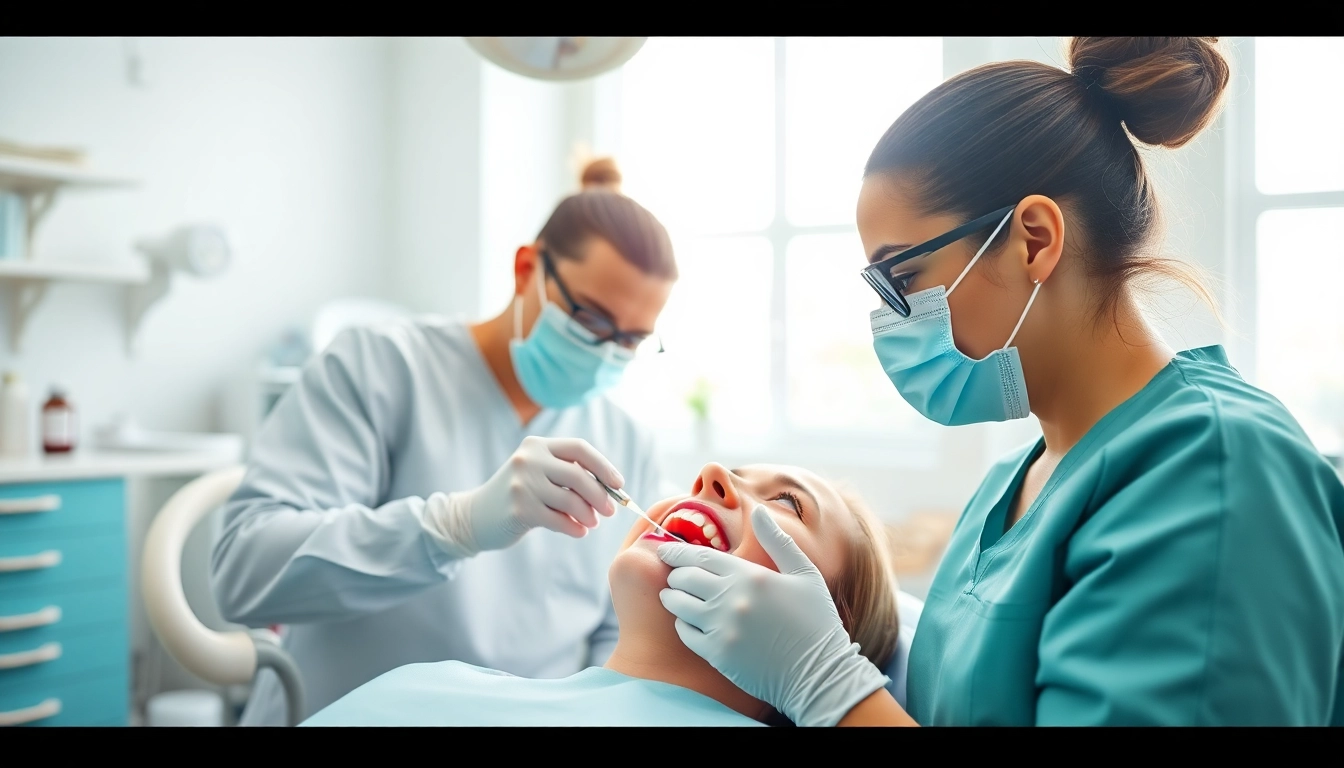
The Importance of Dental Cleanings
Dental cleanings are an essential aspect of maintaining good oral health, yet many people underestimate their importance. These professional procedures help to prevent serious dental issues and support overall health. By regularly attending dental cleanings, individuals can effectively manage their oral hygiene practices and minimize the risk of plaque buildup and gum disease. In this article, we will explore the critical role dental cleanings play in oral health, the different types available, and how to choose the best provider for your needs.
Why Regular Dental Cleanings Are Essential
Regular dental cleanings are crucial for several reasons. First, they help prevent the accumulation of plaque—a sticky film of bacteria that forms on teeth. If plaque is not removed, it hardens into tartar, which can only be removed by a dental professional. Tartar buildup leads to gum disease, which can progress to more serious conditions like periodontitis if left untreated. Furthermore, routine cleanings are an opportunity for early detection of issues such as cavities, gum disease, and even oral cancer.
Practicing good oral hygiene at home is important, but it can never fully replace the need for professional cleanings. Dentists and dental hygienists have specialized tools and training to clean areas that are difficult to reach and can provide personalized advice on maintaining oral health.
How Dental Cleanings Prevent Oral Diseases
Oral diseases such as gingivitis and periodontitis primarily result from the accumulation of plaque and tartar. Regular cleanings facilitate the removal of these harmful substances, significantly reducing the risk of these diseases. During a routine cleaning, bacteria below the gum line can also be addressed, helping to protect the supportive structures of the teeth.
Moreover, cleanings can aid in the prevention of systemic health issues. There is a growing body of evidence suggesting links between oral health and overall health, including conditions like heart disease and diabetes. By preventing gum disease, dental cleanings may consequently protect against these larger health problems.
Benefits of Professional vs. At-Home Care
While at-home dental care—such as brushing and flossing—is vital for good oral hygiene, it cannot wholly substitute for professional cleanings. Dental professionals can remove plaque and tartar effectively and thoroughly, as well as examine your mouth for signs of health issues that might not be visible to you at home. They also apply fluoride treatments and sealants that can help prevent cavities.
In addition, dental professionals can offer personalized insights based on their examinations. They can suggest specific techniques for better brushing and flossing or recommend interventions based on your individual oral health status.
Types of Dental Cleanings Available
Standard Dental Cleanings Explained
A standard dental cleaning is the routine procedure that most people are familiar with. This process typically occurs at a dental visit every six months. During a standard cleaning, the dental hygienist will:
- Examine the patient’s teeth and gums to look for signs of disease.
- Use specialized tools to scrape away plaque and tartar from the tooth surfaces above the gum line.
- Polish the teeth to remove surface stains and make it more difficult for plaque to adhere.
- Floss between the teeth to ensure that all debris is cleared away.
Standard cleanings are essential not only for maintaining aesthetics but also for preventing more serious dental issues from developing.
Deep Cleanings for Advanced Gum Disease
Deep cleanings, also known as scaling and root planing, are required when plaque has accumulated below the gum line, or when gum disease has been diagnosed. This more intensive cleaning process involves:
- Scaling to remove plaque and tartar from below the gum line.
- Root planing to smooth the root surfaces, making it more difficult for bacteria to stick.
Deep cleanings often require local anesthesia to ensure comfort since this process can be more invasive than a standard cleaning.
Frequency of Different Cleaning Types
The frequency of dental cleanings largely depends on individual oral health needs. Most individuals are advised to have standard cleanings every six months. However, those with gum disease may need to undergo deep cleanings more frequently, as recommended by their dentist. Understanding these needs is crucial for maintaining optimal oral health.
The Dental Cleaning Process: Step by Step
Initial Examination and Assessment
The dental cleaning visit begins with a thorough examination. The dentist or hygienist will assess your oral health, checking for decay, gum disease, and other potential issues. This assessment is crucial in determining the type of cleaning and care you will need.
Removal of Plaque and Tartar
Following the assessment, the hygienist will use an ultrasonic scaler and hand instruments to carefully remove plaque and tartar from the surfaces of your teeth. This cleaning process can take 30 to 60 minutes, depending on the amount of buildup that requires removal.
Final Polishing and Care Instructions
After thorough scaling, your hygienist will polish your teeth with a gritty toothpaste and a rotating brush, removing any remaining stains. Finally, you will be provided with care instructions to help maintain your oral hygiene between visits.
Common Concerns about Dental Cleanings
Why Do Dental Cleanings Sometimes Hurt?
One common concern about dental cleanings is discomfort or pain. Depending on your oral health history, you may experience sensitivity during the cleaning procedure, especially if tartar buildup is significant or if you have gum disease. Communicating any discomfort to your hygienist or dentist is essential; they can adjust their approach or suggest topical anesthetics if needed.
Addressing Anxiety Around Dental Visits
Many individuals experience anxiety when it comes to dental visits. To mitigate this, it’s important to communicate your fears with your dentist. Most dental practices have strategies in place, such as sedation options or calming environments, to ease patients’ stress.
Additionally, bringing along distractions, such as music or a stress ball, can help lessen anxiety during the cleaning process. Remember, the dental team’s priority is your comfort and health.
What to Do if You Experience Discomfort
If you experience discomfort during or after a dental cleaning, don’t hesitate to reach out to your dental provider. They can assess if any complications have arisen and suggest appropriate remedies or follow-up treatments. In some cases, over-the-counter pain relievers can be enough to address mild discomfort.
Finding Your Perfect Dental Cleaning Provider
What to Look for in a Dental Clinic
Finding a suitable dental provider is critical for ensuring a positive dental cleaning experience. Look for clinics that offer a range of services, have good customer reviews, and provide a welcoming atmosphere. It’s also helpful to check if they employ the latest technology in dental care.
Read Reviews and Get Recommendations
Positive reviews from other patients are an excellent indicator of quality care. Ask friends or family for recommendations, and also utilize online platforms to read patient testimonials. A provider with an excellent reputation is likely to prioritize patient comfort and care.
Understanding Costs and Insurance Coverage
Before scheduling a dental cleaning appointment, ensure you understand the costs involved—especially if you have dental insurance. Contact your insurance provider to learn what is covered under your plan and ask the dental office about payment options and financing if the procedure may be costly.






